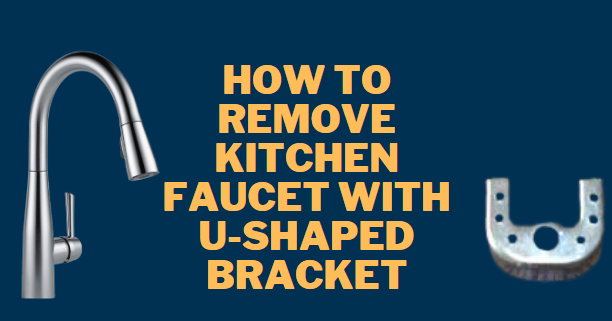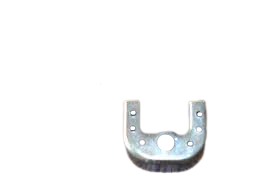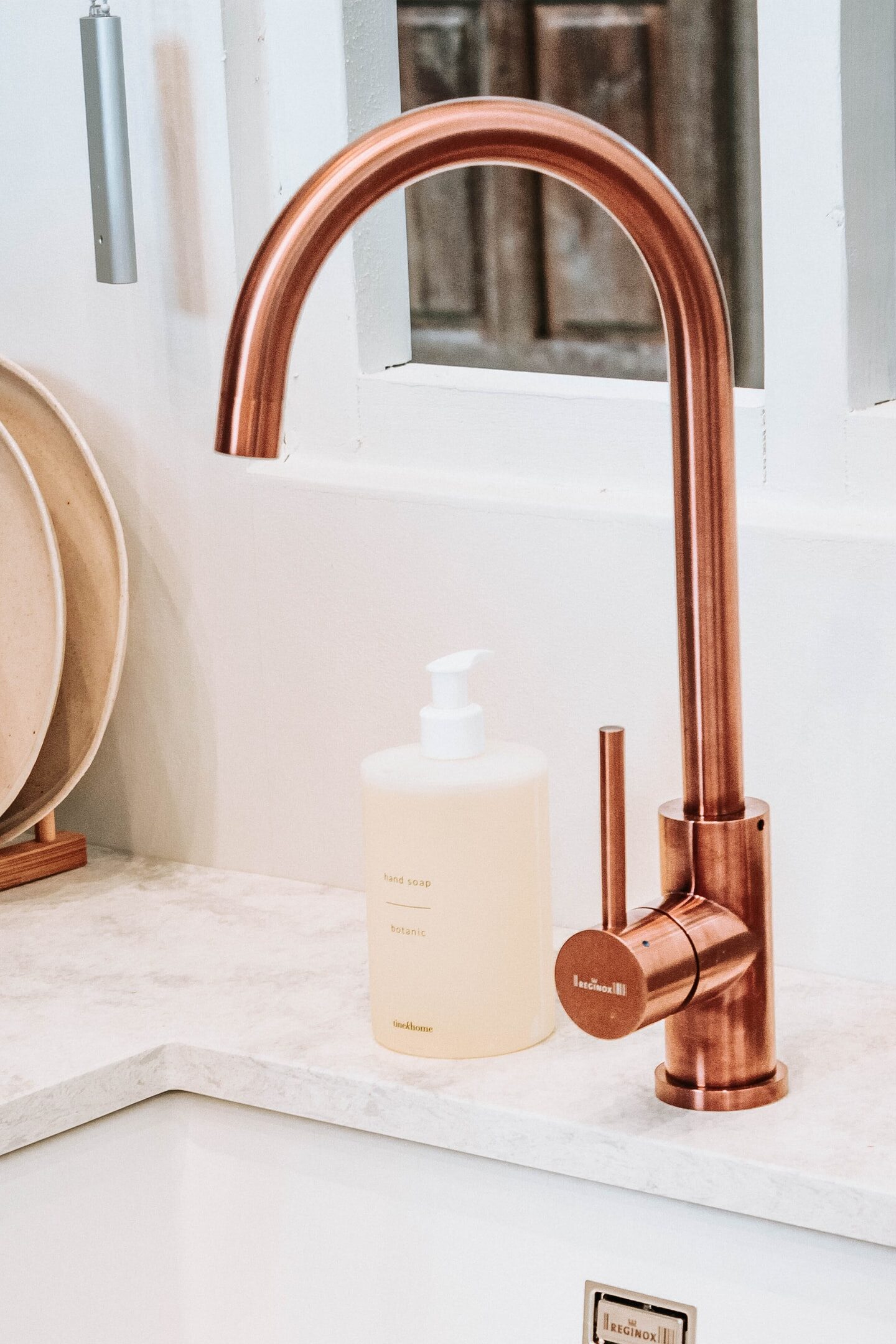
As with most home repairs, removing a kitchen faucet is not as daunting as it may seem. In fact, with the right tools and instructions, it can be a fairly simple process. This blog post will walk you through the steps of removing a kitchen faucet that is attached to the sink with a u-shaped bracket. So whether your faucet is leaking, needs replacement, or just needs to be relocated, follow these simple steps to get the job done!
- Step by step: how to remove kitchen faucet with u-shaped bracket
- 1. Shut off the water supply to the faucet by turning off the valves under the sink
- 2. Remove the decorative caps from the top of the faucet handles
- 3. Use a wrench to loosen and remove the nuts that hold the faucet in place
- 4. Gently pull on the faucet handles to release them from the u-shaped bracket
- 5. Clean any old caulk or gunk from around the sink hole before installing your new faucet
- How Can You Choose The Right Kitchen Faucet
- Material
- Ease in Installation
- Number of Holes
- Finish
- Height
- Price
- Benefits of faucet with u-shaped bracket
- FAQs
Step by step: how to remove kitchen faucet with u-shaped bracket

1. Shut off the water supply to the faucet by turning off the valves under the sink
If you need to remove your kitchen faucet, the first step is to shut off the water supply to the faucet. The best way to do this is to turn off the main water supply to your home. This will ensure that there is no water pressure in the lines when you remove the faucet.
Once the main water supply is turned off, you can then locate the shut-off valve for the kitchen faucet. This valve is usually located under the sink. Once you have found the shut-off valve, turn it clockwise to close it. This will stop any water from flowing through the lines to the faucet. With the water shut off, you can now proceed to remove the kitchen faucet.
2. Remove the decorative caps from the top of the faucet handles
Once the water is turned off, you can begin to remove the decorative caps from the top of the faucet handles. In most cases, these caps can be pried off with a flathead screwdriver. With the caps removed, you will be able to see a small screw that is holding the handle in place.
3. Use a wrench to loosen and remove the nuts that hold the faucet in place
To get access to the faucet handle, you will need to use a wrench to loosen and remove the nuts that hold the faucet in place. The first step is to identify the size of the wrench that you will need. The most common size is a 3/8-inch wrench, but you may need a different size depending on the type of faucet that you have.
Once you have the right size wrench, position it over the nut and turn it counterclockwise to loosen it. If the nut is tight, you may need to use a pipe wrench or pliers to help loosen it. Once the nut is loose, unscrew it by hand and remove it from the faucet. Repeat this process for the other nut and then lift the faucet off of the sink.
4. Gently pull on the faucet handles to release them from the u-shaped bracket
After dealing with the remaining screws, gently pull on the faucet handles to release them from the bracket. Once the handles are loose, you should be able to easily lift the entire faucet off of the sink. If there is any residual water in the lines, be sure to drain it before proceeding. With the faucet removed, you should now have access to the U-shaped bracket. To remove it, simply unscrew the mounting screws and lift it off of the sink. With the bracket removed, you can now install your new kitchen faucet.
5. Clean any old caulk or gunk from around the sink hole before installing your new faucet
It’s important to remove any old caulk or gunk from around the sinkhole before getting started. This will help ensure that your new faucet is installed properly and doesn’t develop any leaks. To remove the old caulk, start by using a putty knife to loosen it up. Then, use a sponge or rag to wipe away any residue. Once the area is clean, you’ll be ready to install your new faucet.
How Can You Choose The Right Kitchen Faucet

Material
While a kitchen faucet may seem like a minor detail in the grand scheme of things, it is actually an important part of the kitchen. Not only does it need to be functional, but it also needs to be able to withstand constant use. As such, material is an important consideration when choosing the right kitchen faucet. Stainless steel is a popular choice because it is durable and easy to clean. However, it is also susceptible to scratches and fingerprints.
Another option is porcelain-coated metal, which is more resistant to scratches and wear but can still be difficult to keep clean. Finally, there are also many different types of plastic, each with its own advantages and disadvantages. Ultimately, the best material for a kitchen faucet depends on the specific needs and preferences of the user.
Ease in Installation
When it comes to choosing a kitchen faucet, ease of installation must be considered. After all, no one wants to spend hours trying to install a new faucet only to find out that it doesn’t fit properly. There are a few things to keep in mind when choosing a kitchen faucet to make sure that installation is as easy as possible.
First, make sure to measure the sink to get the proper measurements for the new faucet. Second, take into consideration the type of sink – whether it is top-mounted or under-mounted – as this will affect the installation process. Finally, check the instructions that come with the faucet to make sure that you understand them before starting the installation. By following these simple tips, you can ensure that your kitchen faucet will be installed quickly and easily.
Number of Holes
The standard configuration is four holes, including a hole for the spout, two handles, and the fourth hole for a sprayer. However, some newer models require only two or three holes. If your sink has extra holes that are not being used, you can cover them with a decorative deck plate.
On the other hand, if your sink does not have enough holes for the faucet you want, you may need to drill new ones. In either case, it is important to make sure that you choose a faucet that will fit your sink properly. With so many options on the market, there is sure to be a kitchen faucet that is perfect for your needs.
Finish
The finish of a faucet not only affects its appearance but also its durability. There is a wide range of finishes available on the market, from traditional chrome to more modern brushed nickel. When choosing a finish, it is important to consider both your personal style and the overall style of your kitchen. If your kitchen has a lot of stainless steel appliances, for example, a chrome finish may be the best option.
On the other hand, if you are looking for a more contemporary look, you may want to choose a brushed nickel finish. Regardless of your personal style, however, it is important to choose a finish that is easy to clean and maintain. Factors such as hardness and resistance to tarnishing should be taken into account when making your final decision.
Height
The average kitchen counter is 36 inches tall, and the sink is typically 14-16 inches deep. The ideal height for a kitchen faucet is about 8-10 inches. This allows plenty of clearance for filling pots and washing dishes, while still being low enough to avoid splashing. Another factor to keep in mind is the height of the person who will be using the faucet most often. If you’re shorter, you may want to choose a faucet with a shorter spout, so that you don’t have to reach as far. Conversely, if you’re taller, you may want to choose a faucet with a longer spout, so that you don’t have to stoop down to use it.
Ultimately, the best way to find the perfect faucet for your kitchen is to try it out in person. Head to your local home improvement store and test out a few different models to see which one feels best for you.
Price
If you have a small kitchen, you may want to choose a compact model that takes up less counter space. Or if you have a large family, you may prefer a model with multiple spray functions. Once you’ve narrowed down your choices, then you can start to compare prices and choose the option that fits both your budget and your needs.
By taking the time to find the right kitchen faucet, you’ll be sure to enjoy years of trouble-free use. Checkout the price of one of the best 4 hole faucets.
Benefits of faucet with u-shaped bracket
Great way to save water and energy
A faucet with a u-shaped bracket is a great way to save water and energy. The u-shaped bracket helps to aerate the water, which means that less water is needed to achieve the desired effect. In addition, the u-shaped bracket helps to reduce the amount of energy required to operate the faucet. As a result, a faucet with a u-shaped bracket is a great way to save water and energy.
Helps in preventing leaks and conserving water
A faucet with a u-shaped bracket helps to prevent leaks by providing a tight seal around the pipe. The bracket also helps to conserve water by preventing water from flowing out of the faucet when it is turned off. As a result, a faucet with a u-shaped bracket is an essential tool for anyone who wants to save water.
Is easy to install and use
U-shaped bracket faucets are becoming increasingly popular in both commercial and residential settings. Often chosen for their stylish, modern look, these faucets are also easy to install and use. The U-shaped bracket provides a stable and secure base for the faucet, making it ideal for high-traffic areas. If you are looking for a stylish and functional faucet for your home or business, a U-shaped bracket faucet is an excellent option.
FAQs
How do you remove a kitchen faucet without a basin wrench?
If you don’t have a basin wrench, you can use a pair of pliers to loosen the nuts holding the faucet in place.
How do you remove a U-shaped faucet?
To begin, essentially switch off the water supply to the faucet and eliminate the handle. Then, utilize a wrench to loosen the nut that holds the faucet set up. When the nut is free, you ought to have the option to take the faucet off of the sink. At long last, tidy up any garbage that might have fallen into the sink during the evacuation, and afterward install your new faucet.
For further readings, you can also read best-shower-faucets.